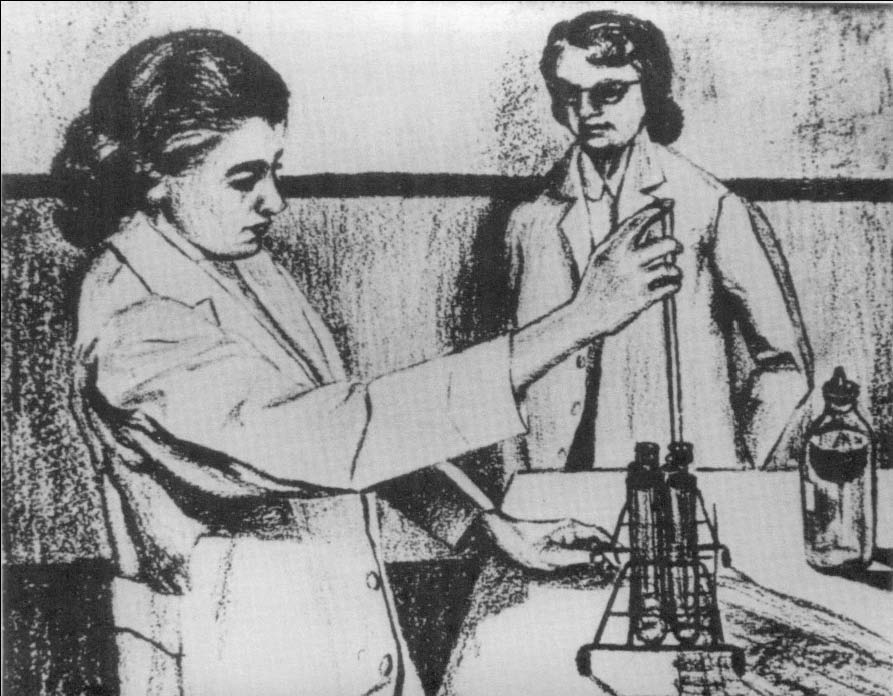Vance Packard’s ‘Hidden Persuaders’ was an exposé of the new techniques of mass manipulation developed by 1950s advertisers. These techniques are still at work today in the age of big data.
How do advertisers get inside our heads?
Charlie WilliamsSarah MarksDaniel Pickaverage reading time 7 minutes
- Serial


In John Carpenter’s 1988 film ‘They Live’, the protagonists use special sunglasses to reveal hidden messages in media and advertising.
In 2014, Facebook revealed details of an experiment they had carried out in collaboration with Cornell University. Researchers modified the type of content that appeared in some users’ newsfeeds. For one group, the Facebook algorithm was adjusted so that only posts with positive content appeared. For a second group they privileged downbeat content. The effect was to subtly change the emotional behaviour of each group. Users who saw only optimistic information were more likely to post cheerful content, and those exposed to negative posts adapted to the norms of the group by posting similarly dispiriting information.
Whether the researchers succeeded in affecting the actual emotions of their sample is uncertain. The experiment was nevertheless notable for both demonstrating the potential of platforms like Facebook to ‘nudge’ users towards certain decisions and behaviours, and for its sheer scale. Typically, experiments in the human sciences use small samples of under 100 participants. The Facebook/Cornell experiment was conducted on 689,003 users.
The 2018 scandal around Cambridge Analytica revealed that the British political consulting firm had collected data on around 87 million Facebook users. Data that they themselves claimed could be used to target individuals online and influence political and consumer behaviour. In his provocatively titled book ‘World Without Mind’, Franklin Foer suggests that the more we extend ourselves into the online, the more we leave ourselves vulnerable to manipulation. But such warnings also point to a longer history of behavioural research in the 20th century and echo equally powerful critiques about the ‘hidden persuaders’ at work on our minds.
Personality and purchases
In the early 1800s, the German phrenologist Franz Joseph Gall claimed that the precise measurement of the skull could reveal information about temperament based on 27 different ‘faculties’. Decades later, the Victorian polymath and eugenicist Francis Galton sought to identify the essential features of criminal types by conflating different images of felons in composite photographs. He collected anthropometric measurements to identify how talent and genius might run in families and to predict maladaptive or delinquent behaviour. By the early 20th century, statisticians had cast doubt on the idea that physical characteristics could indicate character, and psychologists began developing new introspective tests as a measure of personality.
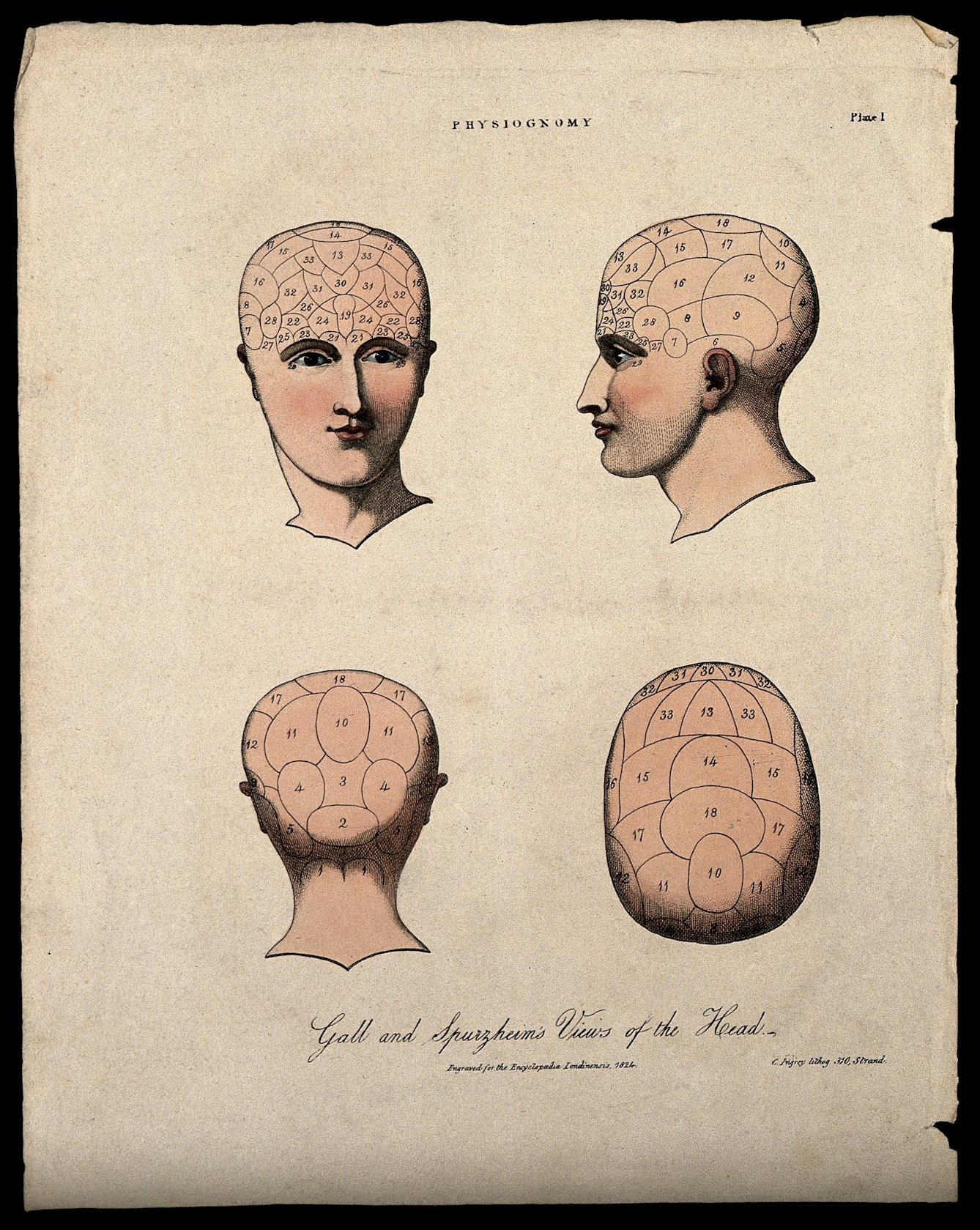
The system of phrenology developed by German physician Franz Joseph Gall suggested that different human faculties were physically located in different sections of the brain.
Early 20th-century tests such as Robert Woodworth’s 1917 Personal Data Sheet were engineered to identify neurotic tendencies through a series of yes/no questions such as “Do you ever get so angry that you see red?” and “Do you get tired of people easily?” Researchers in the interwar period also developed methods of projective testing, such as the Rorschach inkblot test and the Thematic Apperception Test, which invited the subject to respond as freely as possible to ambiguous visual data and thereby reveal unconscious information about the human mind.
The Rorschach test

The Rorschach test was named after Hermann Rorschach, who first wrote about the technique in his 1921 book ‘Psychodiagnostik’.

In the test, subjects are shown a series of ambiguous visual stimuli made by Hermann Rorschach by folding a piece of paper to create a symmetrical inkblot pattern.
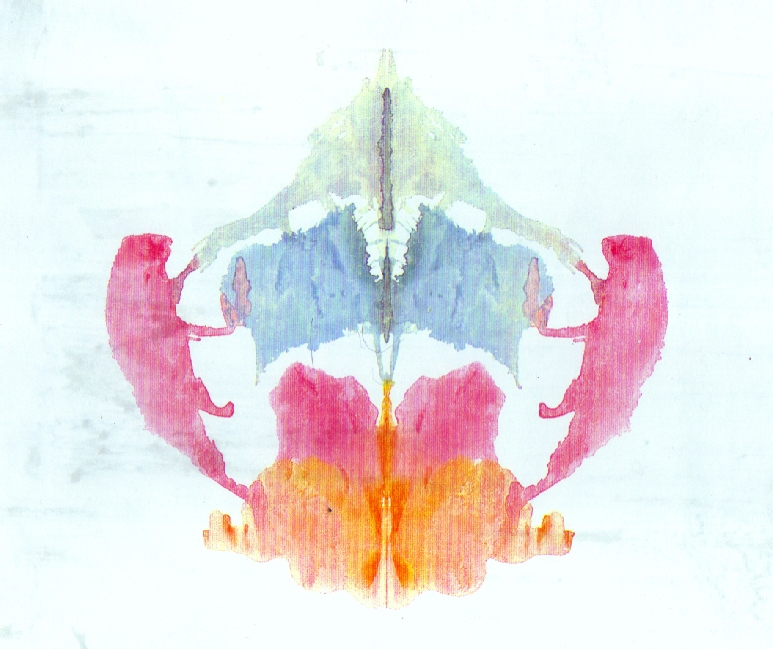
Subjects are asked “What might this be?”, and their answers are recorded and scored by a psychologist. The above card is the eighth card to be shown out of ten. Most subjects claim to see a four-legged animal.

The inkblot test was first developed as a tool for profiling mental disorders such as schizophrenia.
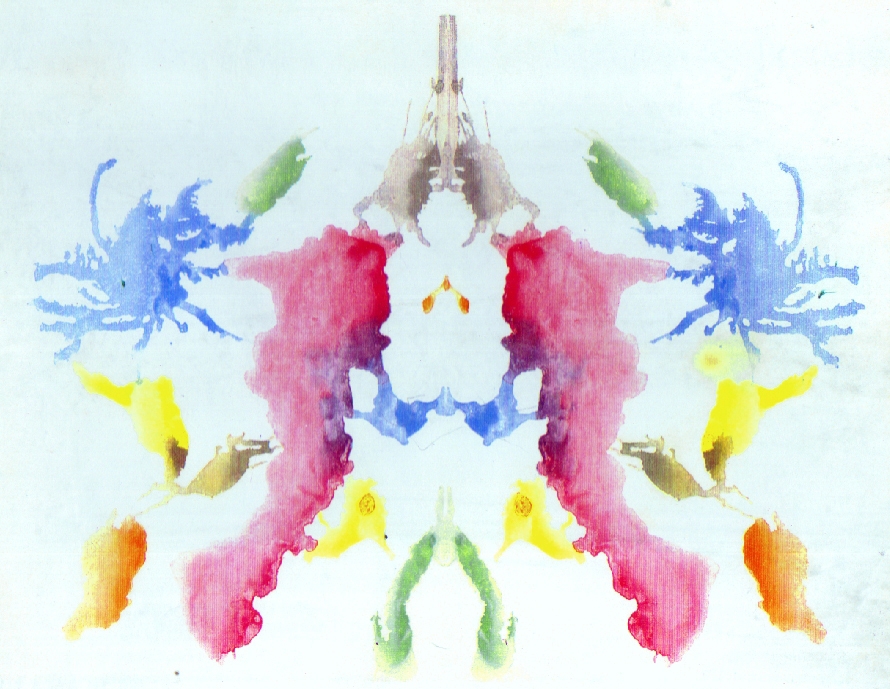
The Rorschach scoring system is complex and was tweaked and modified by researchers throughout the twentieth-century. It has been used as a projective measure of personality and as a test of cognition and projection.
Personality tests were widely used for recruitment in various branches of industry, intelligence, the military and civil service. The most successful ‘multidimensional’ test was the Bernreuter Personality Inventory, which asked 125 questions and measured four dimensions of personality: neurotic tendency, self-sufficiency, introversion-extroversion, and dominance-submission. By 1946, 2 million people were reported to have taken the test and the BPI was applied to assess the personality profiles required for numerous jobs, from machine operators to Hollywood screenwriters.
The Thematic Apperception Test (TAT), or picture interpretation technique, was developed by the American psychologist Henry Murray. Like the Rorschach test, subjects are asked to tell a story about ambiguous visual stimuli presented on picture cards. Narratives they construct around the images are said to reveal conscious or unconscious motives, aspirations, fears and associations. It was employed by War Office Selection Boards (WOSBs) during WWII to recruit potential officers to the British Army.
Social critics in the postwar period argued that such tests were an invasion of privacy and a form of discrimination. In his 1956 book ‘The Organization Man’, William Whyte argued that personality tests were inherently manipulative, testing for a conformist mindset that privileged the values of the organisation over the individual. Whyte’s book included an appendix on ‘How to cheat on personality tests’, advising readers to give the most “conventional, run-of-the-mill, pedestrian” answers possible and a series of ‘standard’ answers to bear in mind such as “I loved my father and my mother, but my father a little bit more”, “I don’t care for books or music much” and “I love my wife and children.” Whyte urged his readers not to testify against themselves by giving up their psyche to the wills of the organisation.
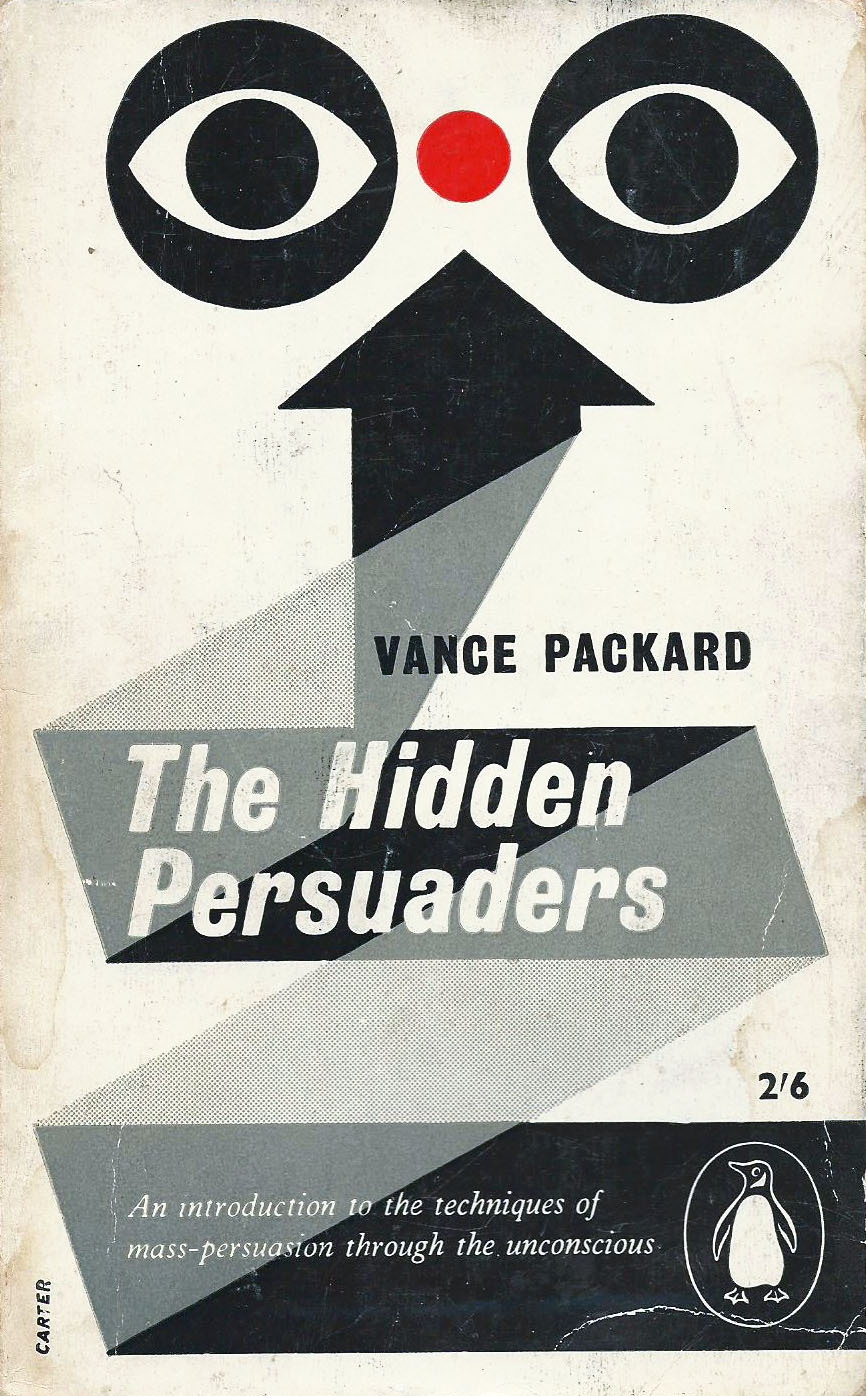
Vance Packard’s 1957 classic ‘The Hidden Persuaders’ described the psychological techniques used by advertisers, aka “Depth Men”, who are “are systematically feeling out our hidden weaknesses and frailties in the hope that they can more efficiently influence our behavior.”
While big business used personality tests to manage their workforce, public relations experts were exploring how they could be used to sell products. In 1957, Vance Packard published ‘The Hidden Persuaders’, an exposé of consumer capitalism’s methods of manipulation. His critique became a bestseller, stoking fears about brainwashing and mind control in postwar America. Packard uncovered how advertising and consumer products were targeted at specific personality profiles or ‘self-images’. He unnervingly recounted how psychologists working at tobacco companies could accurately identify an individual’s cigarette brand of choice based on the results of a Rorschach inkblot test.
Two psychologists are quoted in Packard’s book saying: “Now take the man who drives a Studebaker, smokes Old Golds, uses cream-based hair oil, an electric shaver, carries a Parker 51 fountain pen. Obviously he’s a salesman, an active man, aggressive in face-to-face situations and wants to make a good impression. Probably he was a quite a romantic type in his youth.” The other psychologist adds: “Also, you’ll find that he is wearing loud shorts.”
Unconscious data
‘Psychographics’, the term now used to describe the practice of data mining and microtargeting, emerged as a product of postwar American consumer culture. This method of profiling and targeting consumers and voters, wrote public relations expert Emanuel Demby in 1989, “allows us to view a population as individuals with feelings and tendencies, addressed in compatible groups (segments) to make more efficient use both of mass media and those that are targeted to particular portions of the population.” This new technique allowed the increasingly powerful ‘ad men’ of Madison Avenue to precisely hone their messages to particular types of individual and give them a tailor-made nudge towards a purchase.
Twentieth-century psychographic research used the traditional tools of market research: surveys and focus groups. Today, marketing experts use personal data to make accurate personality assessments of individual consumers. In 2014, Cambridge researchers Michal Kosinski, David Stillwell and Wu Youyou demonstrated a method of generating personality profiles based on Facebook ‘likes’ alone. They claimed that 10 likes delivered a more accurate personality profile than could be given by an individual’s co-worker. One based on 70 likes was more reliable than a close friend or roommate, and 300 likes were more accurate than a partner.

Kosinski, Stillwell and Youyou’s research showed that a sufficiently large number of Facebook ‘likes’ could make a more accurate prediction of a user’s personality than a close friend or partner.
In subsequent investigations, Kosinski and his colleagues showed the effectiveness of targeted ads based on a consumer’s digital footprint. On the one hand, they wrote, “this form of psychological mass persuasion could be used to help people make better decisions and lead healthier and happier lives. On the other hand, it could be used to covertly exploit weaknesses in their character and persuade them to take action against their own best interest”.
The philosopher Byung-Chul Han argues that we have entered an era of ‘digital psychopolitics’, in which big data “facilitates intervention in the psyche, enabling influence to take place on a pre-reflexive level.” Han is one of many to imagine a world in which algorithms generated by big tech companies know us better than we know ourselves. Concerns about the role of mass media in shaping public opinion are nothing new, but where 20th-century visions of totalitarianism saw the psychological homogenisation of the electorate through cinema and radio, the age of big data opens up a new idea of manipulation by mass media, which not only preserves individualism, but also preys on it directly. We may be heading less for Orwell’s totalitarian nightmare of ‘Nineteen Eighty-Four’ than Huxley’s disturbing account of a ‘Brave New World’, experiencing our trapped condition as strangely enjoyable: drugged up and blissed out, luxuriating in the distraction of continual status updates.
Find out more about the Hidden Persuaders project examining ‘brainwashing’ in the Cold War at Birkbeck, University of London. The War of Nerves, an exhibition about the psychological landscape of the Cold War runs at the Wende Museum in Los Angeles until January 2019.
About the contributors
Charlie Williams
Charlie Williams is a postdoctoral researcher working with the Hidden Persuaders project at Birkbeck, University of London. His research explores Cold War culture through the lens of the human sciences with an emphasis on the psychological, emotional and economic relationships between humans and emerging 'psy' technologies.
Sarah Marks
Sarah Marks is a historian of twentieth century science and medicine, and Central and Eastern Europe. She is a postdoctoral researcher with the Hidden Persuaders project at Birkbeck, University of London, and is co-editor of the book 'Psychiatry in Communist Europe' (with Mat Savelli, Palgrave, 2015).
Daniel Pick
Daniel Pick is professor of history at Birkbeck, a psychoanalyst at the British Psychoanalytical Society, and the senior investigator on the Wellcome-funded Hidden Persuaders project. His publications include 'Psychoanalysis: A Very Short Introduction' (OUP 2015) and 'The Pursuit of the Nazi Mind: Hitler, Hess and the Analysts' (OUP 2012)
